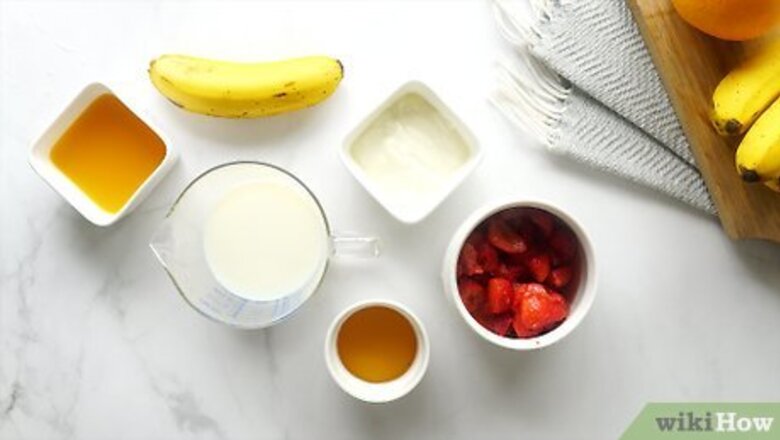
views
Making the Simple Fruit Smoothie
Add the liquids. Pour liquids (1 to 2 glasses) in first for efficient blending. i.e milk, juice. To add a little magic, sprinkle sweeteners.
Prepare the soft ingredients and add them: Smoothies are all about striking a healthy balance. Smoothies made with fruits like oranges and berries, which tend to be acidic, benefit greatly from the addition of yogurt (or one of the alternatives listed below) for their body, texture, and creaminess. But you may use this to add more healthy and substantial ingredients to your smoothie. To thicken a smoothie, yogurt is the most convenient option, but there are many more. The greatest ingredient for adding creaminess and thickness to smoothies is yogurt. Greek yogurt is ideal since it is rich, thick, and protein-rich. Also, you might substitute silken tofu, parmesan cheese, frozen yogurt, or ice cream for the ice cream. Nut butter, Nuts, or seeds can add a delectable flavor and many beneficial elements to smoothies and can make them better. They are a great protein, dietary fiber, and heart-healthy fat source. Choose natural, unsweetened nut butter whenever you can.
Prepare the fruits. Slice and freeze some fruits and vegetables. The fruits and veggies should be sliced into small blocks and frozen since frozen fruits and vegetables create thick and frosty smoothies.
Add fruits and veggies. Choose any type of fruit you like, whether it's fresh, frozen, or a combination of the two, to create your smoothie. Frozen fruit is a great addition to your smoothie because it tastes even better. Making a smoothie without ice may produce a thicker consistency and a more robust flavor. .Frozen fruit is another useful option. Frozen fruits are a terrific option when they are out of season because they are picked at their peak ripeness and immediately frozen, which preserves their texture and nutritional value. Bananas and other ripening fruit can be easily frozen, and pre-packaged frozen fruit can also be purchased. You may buy fresh fruit in bulk in season (especially if it's on sale), then prepare it for freezing by peeling, slicing, bagging, and storing it in the freezer.
Add sweeteners and flavor boosters. To make the best smoothie, the sweetness should come from fruit. You generally won't need much sugar using ripe, sweet fruits like bananas and mangoes. The liquid sweetener is recommended for added sweetness because it blends in easily. Always remember that the smoothie's sweetness will vary from batch to batch based on the ripeness and sweetness of the fruit used. An already delicious smoothie can be elevated to a new level by adding flavor enhancers, amplifying its base flavors, and giving them more nuance. Combine 1 teaspoon of honey and taste it to see if you need more. If more is required, add it in. The best flavor boosters are things like spices or extracts (e.g., ginger and cayenne pepper) a pinch of salt, or cocoa powder.
Step 9: Throw in other add-ins. The best health-boosting add-ins for smoothies are both healthy fats and protein powders. Healthy fats. To improve nutritional absorption, boost smoothie enjoyment, and extend satiety, include a small amount of healthy fat if the ingredients you've previously chosen are low in fat. Spread a spoonful of nut butter or a healthy oil over the top, or sprinkle on a tablespoon of nuts or seeds (such as coconut, flaxseed, or fish oil). Alternatively, a tiny quantity of avocado, which is high in healthy fat and would give your smoothie a creamy texture, might be a fantastic addition. Protein powder. If the ingredients you have chosen do not contain enough protein, add a scoop of your choice protein powder. Protein is essential whether you're drinking the smoothie as a meal replacement shake or snacking it after a workout. Due to its slow digestion and steady effect on blood sugar, protein keeps you feeling fuller for longer and prevents snacking. Adding protein transforms your smoothie from a light snack into a more substantial meal. But you can substitute Greek yogurt, silken tofu, or legumes if you don't want to use protein powder.
Blend your ingredients. If you haven't used frozen fruit, add three ice cubes to the blender for a pleasant smoothie. Begin at a low or medium pace and gradually increase it to the maximum possible. This allows the blender's blades to progressively chop the food without overworking the motor. Mixing can take 30 seconds to a minute, depending on the ingredients.
Making a Classic Berry Smoothie

Gather your ingredients and supplies. To make any basic smoothie, you need fruit, liquid, and a blender. Plus, you'll also need two cups to serve the smoothie in when it’s ready. If you don’t add ice cubes to your smoothie, you can serve it over ice to make a chilled treat. If you don’t have a blender, you can also use an immersion blender or food processor to make smoothies.
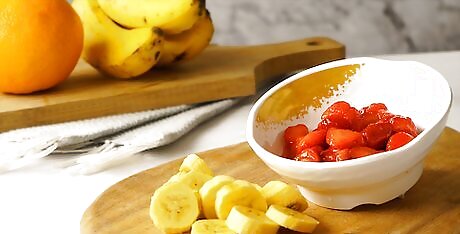
Wash and cut the fruit. Peel the banana and cut it into one-inch (2.5 cm) chunks. Run the berries under cold water to remove dirt. Use a small knife or your fingernail to remove the stems. Cut the strawberries in half if they are larger than one inch (2.5 cm) in width. You can substitute any or all of the strawberries with other berries, such as blueberries, raspberries, or blackberries.
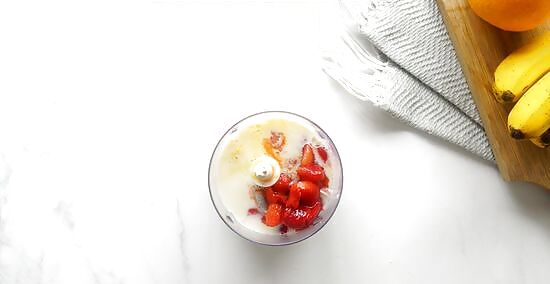
Add the liquid and the fruit. In order to make a perfectly smooth and creamy smoothie, it’s important to add the liquids first, so pour the milk and orange juice into the blender. This will ensure the blender blades have lubrication around them and don’t immediately jam up on the frozen berries. You can either use dairy or non-dairy milk for this recipe. Popular non-dairy options include soy, rice, and almond milk.
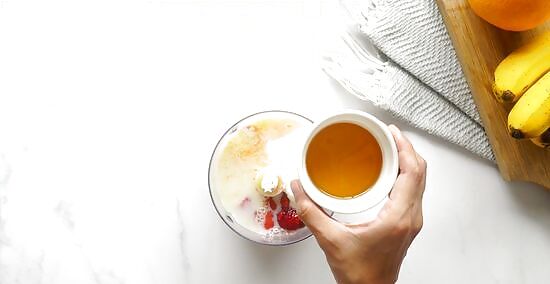
Add the remaining ingredients. Your blender should currently have liquid in the bottom and fruit on top. Finally, add the yogurt and honey. Adding these ingredients last will ensure they are evenly distributed throughout the smoothie.
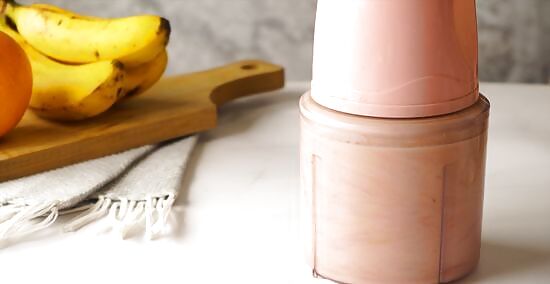
Blend the smoothie. Turn the blender to a low speed and begin blending the ingredients. As some of the fruit chunks get blended and incorporated, turn up the speed a little. Once all the fruit is blended, turn the blender to high to do a final blend and fully incorporate all the ingredients. Starting the blender on low will prevent an air bubble from forming around the blades.
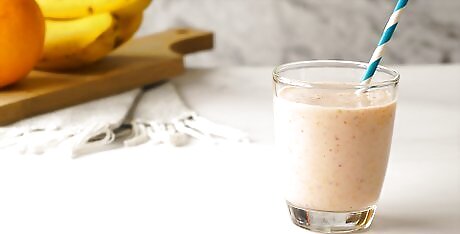
Serve and enjoy. Portion the smoothie out equally into two serving glasses. You can serve it over ice, with straws, or any other way you like. If you're a big fan of berries, you can try other berry smoothie recipes as well.
Energizing With a Coffee Smoothie

Make the coffee ice cubes. Brew one cup of strong coffee, and allow it to cool to room temperature. When it’s cool, use the coffee to fill ice cube trays and allow the ice to freeze overnight. To brew strong coffee, use 4 tablespoons (21.2 g) of coffee per cup of water.
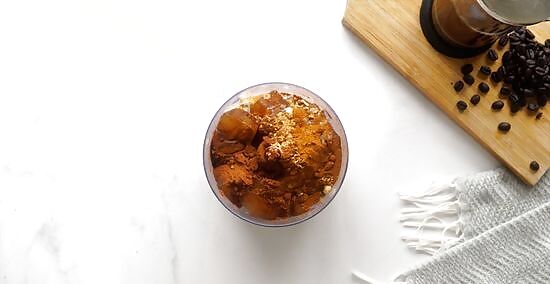
Combine the ingredients in the blender. Put the milk in first. Cut the banana into one-inch (2.5 cm) chunks, and throw that in along with the coffee ice cubes. Then add the oats, followed by the remaining ingredients. The oats, flax, and spices are optional ingredients that make this smoothie more like a complete breakfast.
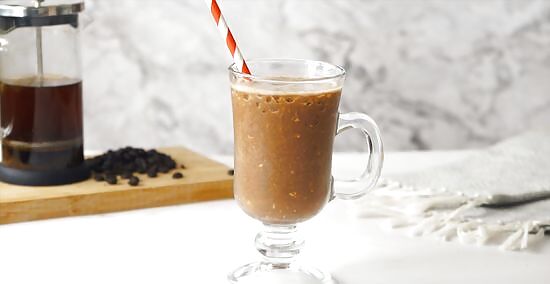
Blend and serve. Start on a low speed to allow the blender time to process the ice. As the ingredients get incorporated, gradually increase the speed until everything is smooth and creamy. Serve in a tall glass or to-go cup for a healthy breakfast on the road.
Creating a Tropical Smoothie
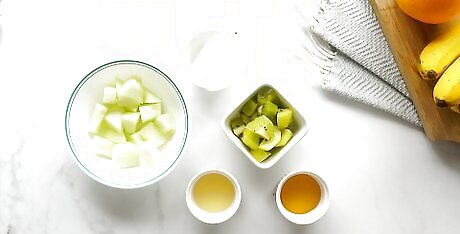
Gather your ingredients and supplies. Along with your fruit, ice, and the blender, you will also need either one large or two small cups. This recipe makes one two-cup smoothie, or you can make two snack-sized drinks.

Peel and cut the fruit. With a sharp knife, cut the hard ends off the kiwi. Carefully use the knife to peel the fuzzy skin from the fruit. Then, cut the kiwi into quarters. For the honeydew, start by cutting the melon in half. Use a spoon to scoop out the seeds and stringy fruit from the center. Flip each half over onto the flat half and carefully peel off the skin with a sharp knife. Cut the melon into one-inch (2.5 cm) chunks. For an additional punch of flavor, consider adding ½ teaspoon (1 g) of freshly grated ginger to the smoothie as well.

Add the ingredients to the blender. Combine the lemon juice, fruit, ice cubes, and honey in the blender. Blend on low speed until the fruit and ice begin to break up, then gradually increase the speed. As the mixture becomes increasingly smooth, increase the speed to high.

Serve and enjoy. This smoothie makes a filling snack for one person or a small treat for two.
Creating Your Own Smoothie Recipes
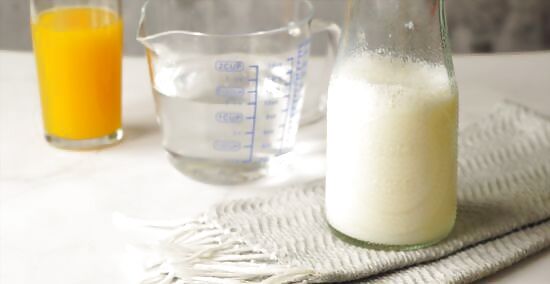
Pick your liquid. Every smoothie has at least two main ingredients, and those are liquid and fruit. The liquid portion of a smoothie helps the blender out and makes the consistency smooth and creamy. For every cup of fruit you use, you should add ¼ to 1/3 cup of liquid to the smoothie. Good liquid options include: Non-dairy milk, such as almond, rice, and soy Coconut milk or coconut water Water Dairy milk Fruit juice Green tea
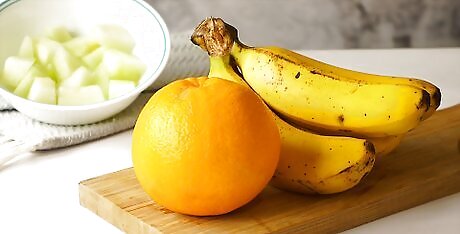
Choose your fruit. You can use any fruit or fruit combination in a smoothie, but it’s important to choose juicy fruit and creamy fruit for each smoothie. This will ensure a balanced consistency. Use fresh or frozen fruit for the most nutritional benefits. Frozen fruit will give the smoothie a cold and refreshing iciness. Thick and creamy base fruits include mango, apple, peach, papaya, coconut, avocado, and banana. Juicy fruit options for smoothies include citrus fruits like oranges and grapefruit, pineapple, watermelon, and berries such as strawberries, raspberries, blueberries, and blackberries.
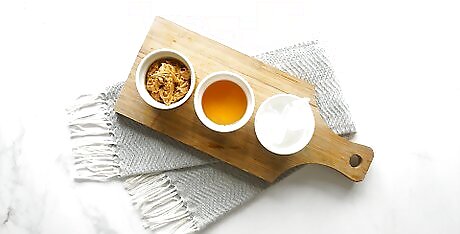
Select additional ingredients. As long as you have a liquid and fruit you can make a smoothie, but there are also optional ingredients you can add to enhance the nutritional value or change the flavor or texture. For added nutritional benefits, add about one tablespoon of nut butter, protein powder, hemp hearts, or a small handful of spinach or kale. For added sweetness, consider using a pinch of brown sugar, honey, or maple syrup, or a couple of dates. For extra flavor, add a pinch of cinnamon, nutmeg, or cloves. For extra thickness and the right texture, add a few cubes of ice to the smoothie if you used fresh instead of frozen fruit.

Add ingredients in the right order. To ensure the right consistency, protect the blades from damage. To prevent air bubbles from forming, you should always add the liquid portion of your smoothie to the blender first. You can then add your fruit, ice, and additional ingredients. Always start the blender on a low speed to prevent air bubbles from forming. If air bubbles form, the blades won’t be able to blend properly. If this happens, turn off the blender, unplug the unit, and use a long spoon to stir everything. Add more liquid before starting up the blender again.




















Comments
0 comment